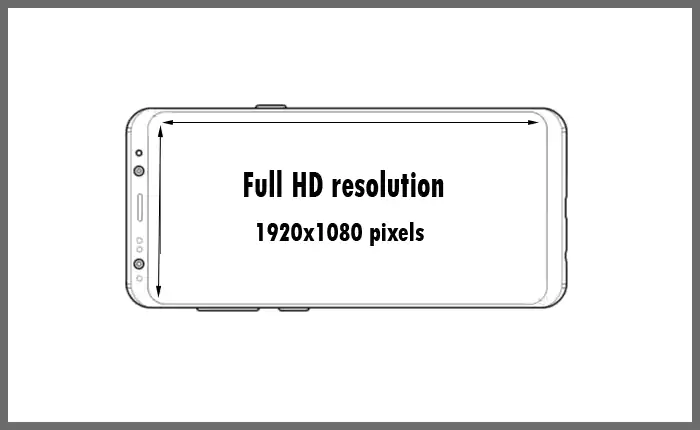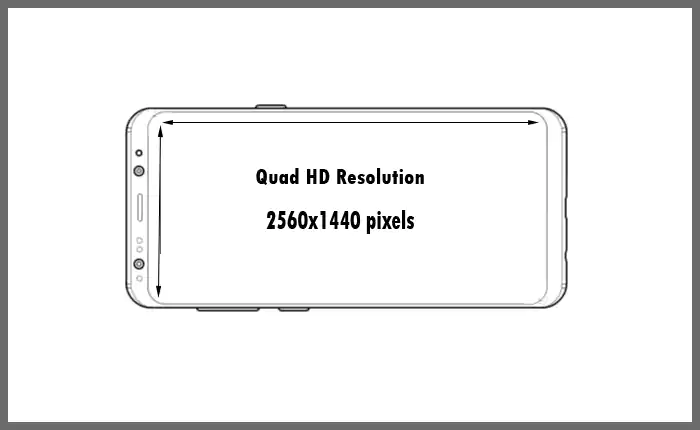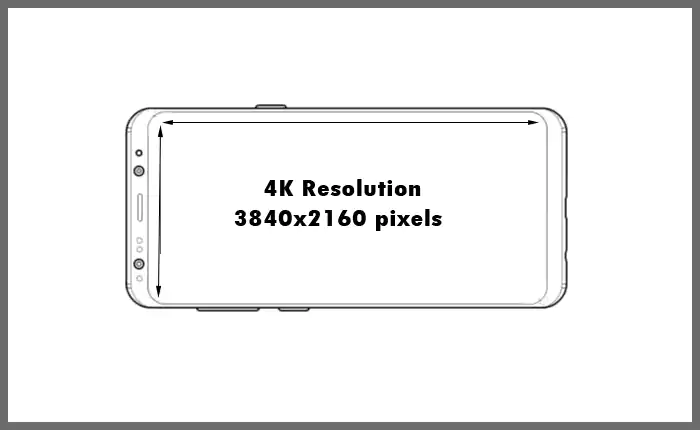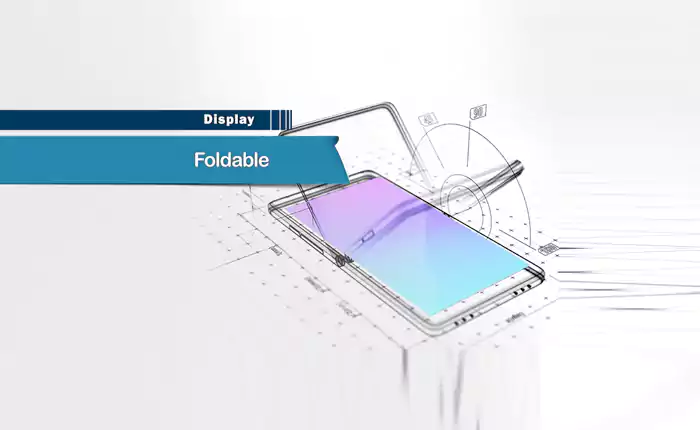Smartphone Display Resolution Definition
Smartphone display resolution refers to the number of pixels (individual tiny dots of light) that make up the screen of a smartphone. It is typically expressed as a combination of two numbers, such as 1920x1080 or 1080x2340, which represent the horizontal and vertical pixel counts, respectively.
Here's what each of these components means:
Horizontal Pixel Count: This is the number of pixels in each row from left to right on the smartphone screen. It determines how wide the display is in terms of pixels.
Vertical Pixel Count: This is the number of pixels in each column from top to bottom on the smartphone screen. It determines how tall the display is in terms of pixels.
When you multiply these two numbers together, you get the total number of pixels on the screen, which is often used to describe the display's overall quality. For example, a display with a resolution of 1920x1080 has 1,920 pixels in each row and 1,080 pixels in each column, resulting in a total of 2,073,600 pixels. This resolution is commonly referred to as "Full HD" or "1080p."
Higher resolution displays typically provide sharper and more detailed images and text, as they can display more information and finer details. However, they can also consume more power and require more processing power, so there's often a trade-off between resolution and battery life or performance in smartphones.

Display Resolution Type
Smartphone display resolutions vary, and there are several common types you might encounter:
1. HD (High Definition):
This typically refers to a resolution of 1280x720 pixels. It's often referred to as "720p." While not as sharp as higher resolutions, it still offers good image quality on smaller smartphone screens.
.webp)
2. Full HD (FHD):
Full HD resolution is 1920x1080 pixels, often referred to as "1080p." It provides sharper and more detailed images compared to HD, making it a popular choice for many smartphones.

3. Quad HD (QHD):
Quad HD Resolution is 2560x1440 pixels, also known as "1440p." It offers even greater detail and clarity, especially on larger screens, and is commonly found on flagship smartphones.

4. Ultra HD (UHD) or 4K:
Ultra HD or 4K resolution is 3840x2160 pixels. It's referred to as "4K" because it offers roughly four times the number of pixels as Full HD. This results in incredibly sharp visuals, but it can also be more demanding on a device's hardware and battery life.

5. 5K and Beyond:
Some high-end smartphones or specialized devices may have resolutions exceeding 4K, such as 5120x2880 or higher. These resolutions are often found on devices designed for creative professionals who require ultra-high-resolution displays for tasks like video editing.

6. Dynamic or Variable Resolutions:
Some smartphones have the ability to dynamically adjust their display resolution based on the content being displayed or to conserve battery life. For example, they might use a lower resolution for tasks like reading text and switch to a higher resolution for watching videos or playing games.
7. Foldable Displays:
Foldable smartphones, which have screens that can fold or unfold, often have unique display resolutions and aspect ratios that can change depending on the device's configuration.

8. Specialized Displays:
Some smartphones, particularly those designed for specific purposes like gaming or augmented reality, may feature unique display resolutions optimized for their intended use cases.
The choice of display resolution depends on factors such as screen size, intended use, and the device's processing capabilities. Higher resolutions tend to provide sharper visuals, but they may also consume more power and require more powerful hardware to drive effectively. As a result, smartphone manufacturers carefully consider the balance between resolution and other factors to provide the best possible user experience.
Higher display resolutions have these benefits
1. Sharper and more detailed pictures:
Displays with a higher resolution can show text and images with more clarity and detail. This is especially noticeable on bigger screens.
2. Gaming Experience:
When watching videos or playing games, better resolutions can make the experience more immersive and enjoyable by making the images clearer.
3. Multitasking:
You can use multiple apps or windows side by side on bigger, higher-resolution screens because you have more room to work with.
4. Better for Productivity:
High-resolution displays are often preferred for productivity tasks like video editing, graphic design, and document editing because they let you see more information at once.
Higher display resolutions have some disadvantages
1. Increased power use:
Higher values need more power to run, which can shorten the life of the battery. When you use higher resolutions, especially for things that use a lot of power, your device's battery may drain faster.
2. Effects on performance:
Graphics processing gets harder as the resolution gets better. Because of this, some smartphones may not work as well with games or apps that use a lot of images.
3. Cost:
Devices with higher-resolution screens are usually more expensive to make and, as a result, cost more for customers.
4. Reduced battery life:
Running a high-resolution screen at full brightness can use more power, which could cut down on how long you can use your device between charges.
5. Storage Usage:
Photos, videos, and apps with higher resolutions may use up more space on your device's storage.
Displays with higher resolutions offer better picture quality and a more immersive experience, but they also use more power, cost more, and might affect performance. The best screen resolution depends on how you plan to use your smartphone and what you like. If you care more about visual quality and enjoy multimedia material, a higher resolution might be a good choice. On the other hand, if you care more about battery life and performance, you might choose a lower resolution.
Which Display resolution is best for a smartphone?
The best screen resolution for a smartphone depends on your preferences and how you plan to use it. Here are some things to think about to help you make the right choice:
1. Full HD (FHD) - 1920x1080 pixels (1080p):
Advantages:
It has a good balance between battery life and image sharpness. Most materials are made to look best at this size. Fits for general smartphone use, such as viewing the web, using social media, and streaming videos.
Who it's for:
People who want a good mix between picture quality and battery life.
2. Quad High Definition (QHD): 2560x1440 pixels (1440p):
Advantages:
provides even crisper and more vivid images, which makes it ideal for gamers, multimedia enthusiasts, and anyone who places high importance on picture quality.
Who it's for:
People who watch high-resolution movies, play games with a lot of graphics, or work with photos and videos that have a lot of detail.
3. Ultra High Definition, or 4K, is 3840x2160 pixels:
Advantages:
It gives the most depth and clarity of any smartphone camera. This is the best option for professional video creators and people who want the best visual quality possible.
Who it's for:
It's for professionals, people who make their own content, and anyone else who wants the best show quality.
4. Adaptive displays or dynamic resolution:
Advantages:
The resolution of these displays can be changed based on what is being shown, which can help save battery life while keeping the picture quality high.
Who it's for:
Users who are comfortable with adaptive display technology and want a good balance between picture quality and battery life.
5. Budget or Basic Resolutions (HD or lower):
Advantages:
Lower-resolution screens use less power, cost less, and can still do most of the things you need them to do.
Who it's for:
Users who want to keep their costs down or who mostly use their phones for simple tasks like calls, texts, and light web browsing.